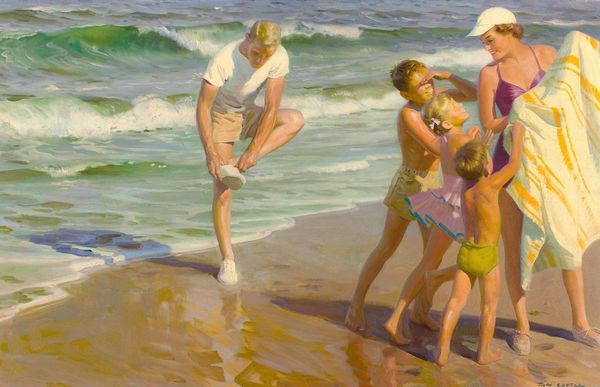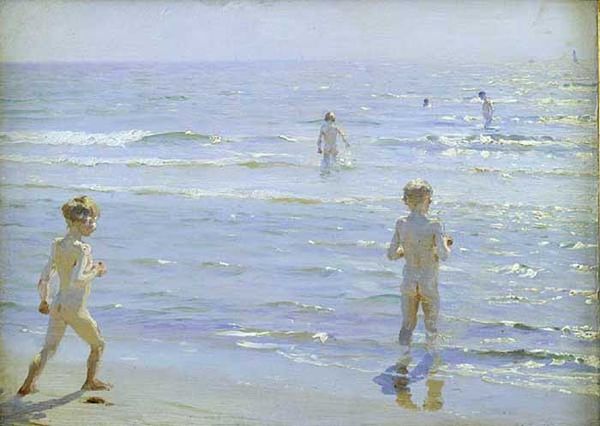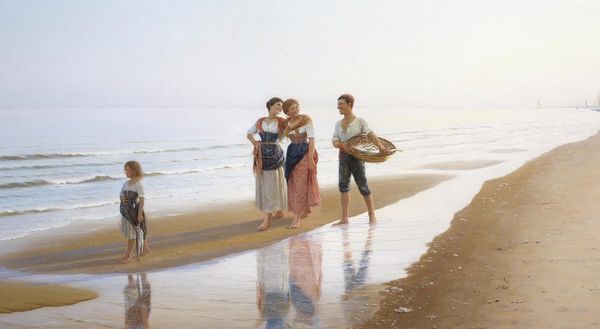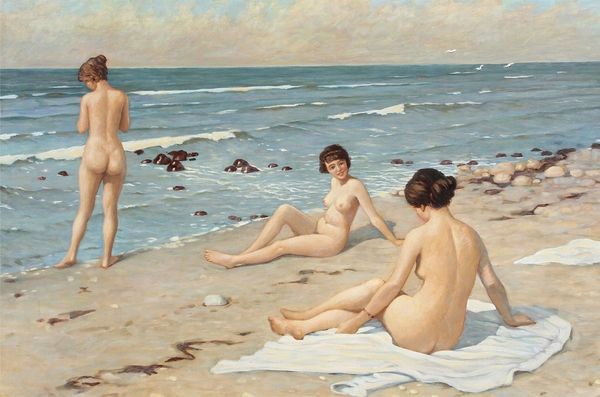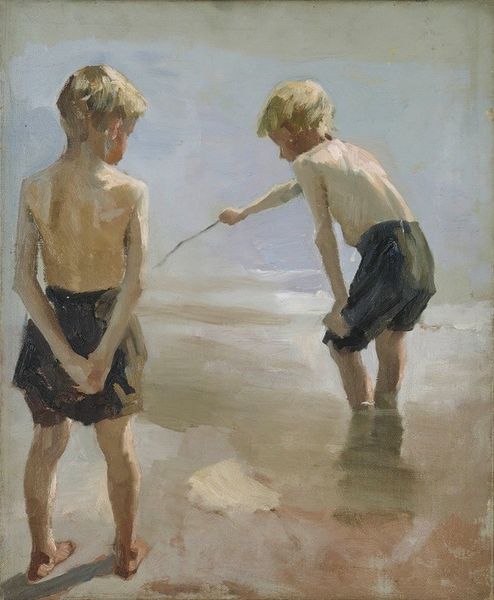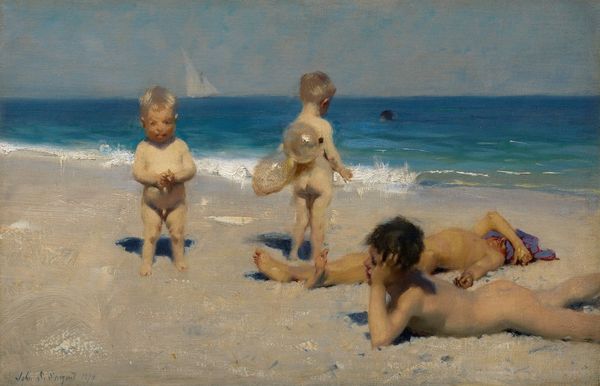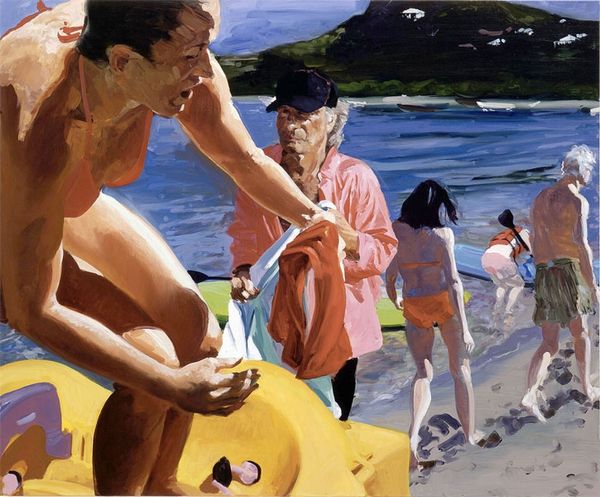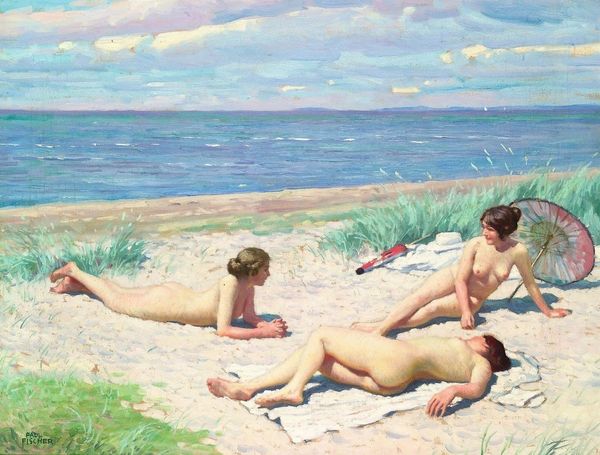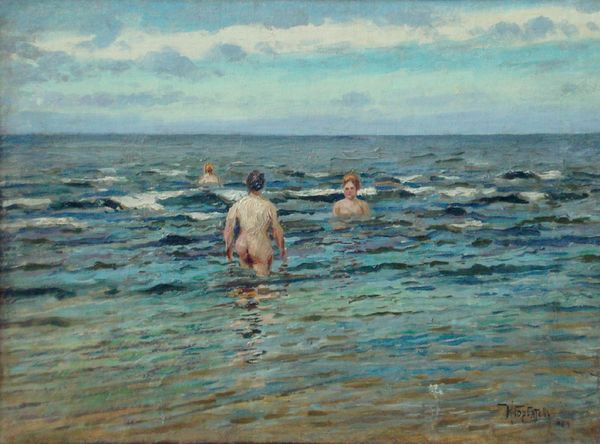
Copyright: Public domain
Pasquale Celommi painted "Il Dono Del Mare" in the late 19th or early 20th century, capturing a serene beach scene with children, where we see both innocence and a deeper connection to nature's bounty. The boy holding up what appears to be a shell is rich with symbolism. Consider the motif of the 'shell'. In Renaissance art, shells often represented pilgrimage or were associated with Venus, goddess of love, born from the sea. Here, however, it’s not about divine love but speaks to the raw, untamed relationship with the natural world. This boy presents his treasure, a gift from the sea, embodying a primal act of offering. This gesture resonates across cultures and eras – from ancient harvest rituals to modern gift-giving. It's a visual echo of humankind's perpetual exchange with nature, a subconscious acknowledgement of what the ocean provides. The painting taps into a collective memory, evoking a sense of childlike wonder. The sea, in its vastness, provides a powerful, emotional landscape, a mirror reflecting our earliest encounters with the world.
Comments
No comments
Be the first to comment and join the conversation on the ultimate creative platform.
